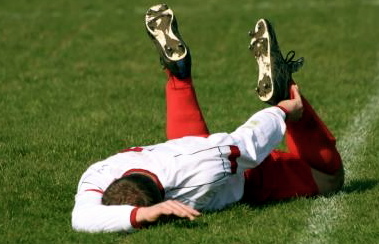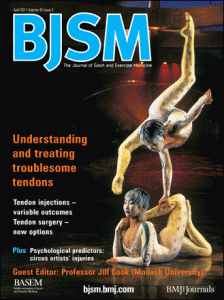Lots of exciting new tendon research presented in the April 2011 issue of BJSM (view online here!). As an introductory taste, here’s an excerpt of the Warm up by Jill Cook:
Tendinopathy: no longer a ‘one size fits all’ diagnosis
Tendon research has come a long way. So far, in fact, that 120 tendon-interested clinicians and scientists met in Umeå, north Sweden, in October 2010 at a conference called ‘Neuronal and non-neuronal pathways in the tendon pathology continuum’. The novel data, vigorous exchanges and the generation of new ideas for study highlighted the buzz in this field. The stories of challenging clinical cases underscored the urgency for improvements in diagnosis and in treatment. In this issue, you will find papers on new surgical techniques (see pages 407 and 411), advances in understanding tendon pain (see pages 393 and 429) and updates on injection therapies (see pages 411 and 424). All these allow you to manage patients and athletes who present with problematical tendon symptoms more effectively.
Subgroups, stages and algorithms
One of the issues arising from all this research is that the days are well gone when tendinopathy was an overarching diagnosis. Subgroups of tendinopathies, different stages of presentation, and risk factors that vary between sexes, ages and activities mean that the diagnosis must be more specific than just ‘tendinopathy.’
This is most clearly described by Professor Alfredson (see pages 386 and 407), who raises the concept of plantaris being the root of some failed Achilles tendinopathy treatments. Although he suggests a surgical solution (he is a surgeon!) there are conservative approaches that may work if applied in the early stages. As he suggests that compression of the plantaris against the Achilles may be a key aetiology, then reducing compression similar to the approach taken with insertional Achilles tendon problems can help.1 It may also explain why heel raises help some people with Achilles tendinopathy and yet do not seem to help others….

